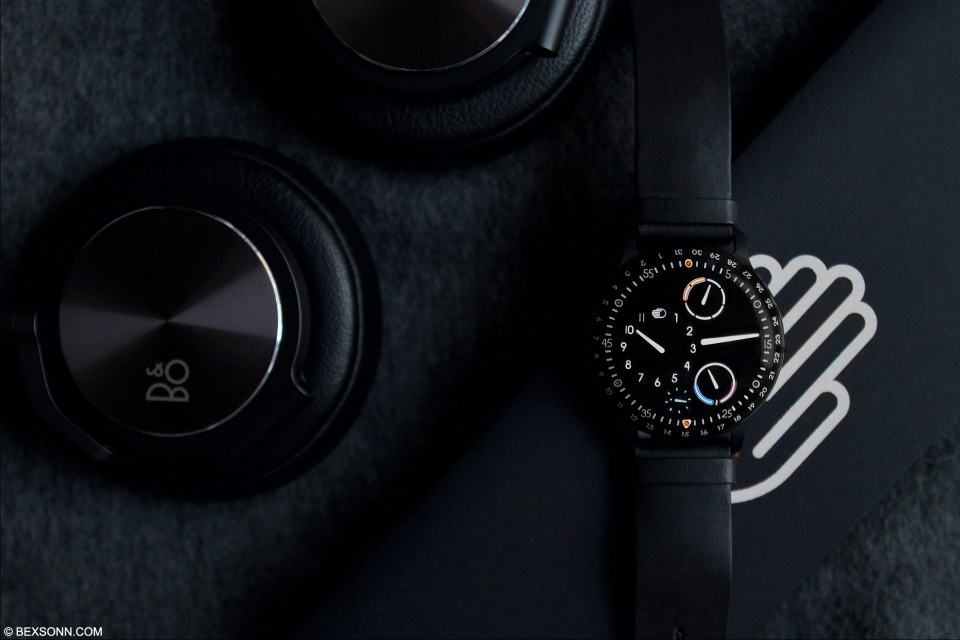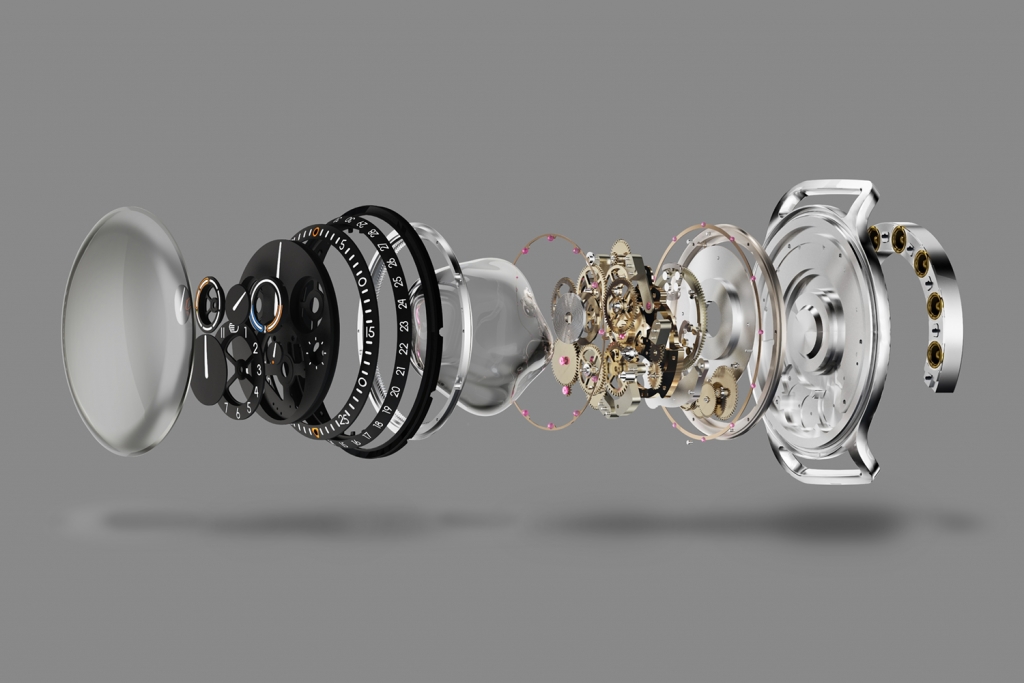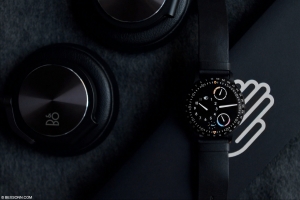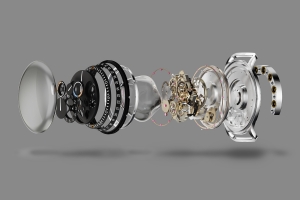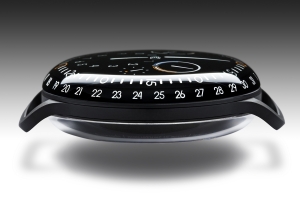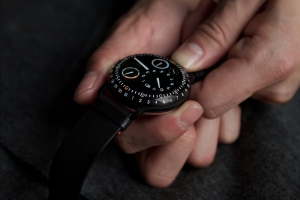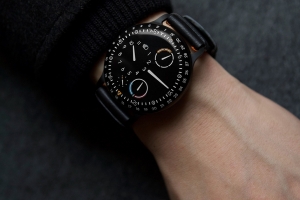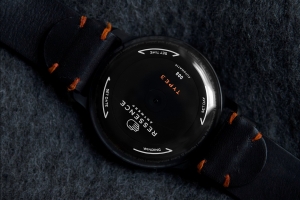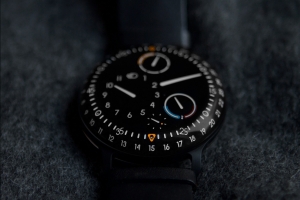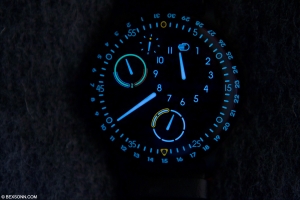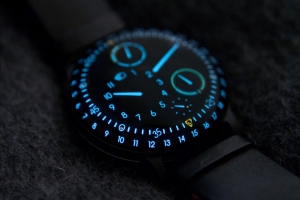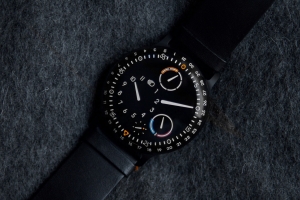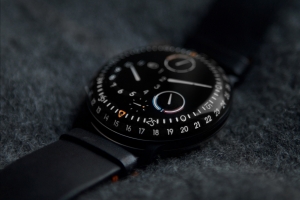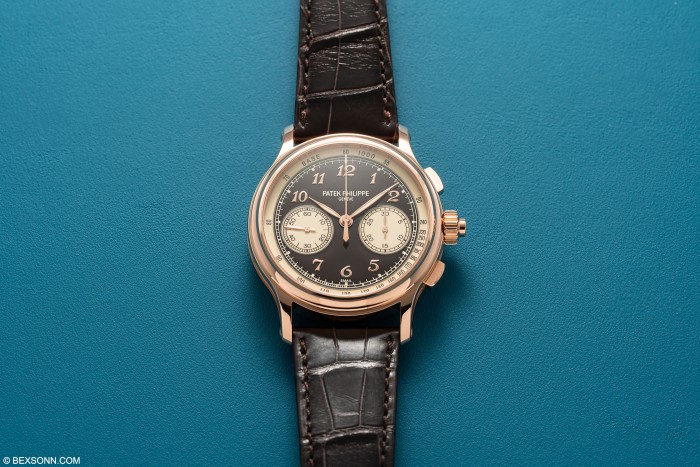In 2013, Ressence first released the Type 3, a groundbreaking horological marvel that took the watch world by storm. While it is understandable that its aesthetics are largely a matter of taste, no one could deny its impressiveness in terms of originality and technical innovation. In 2015, Ressence released an updated version of the Type 3, and we were very lucky to have it for a week.
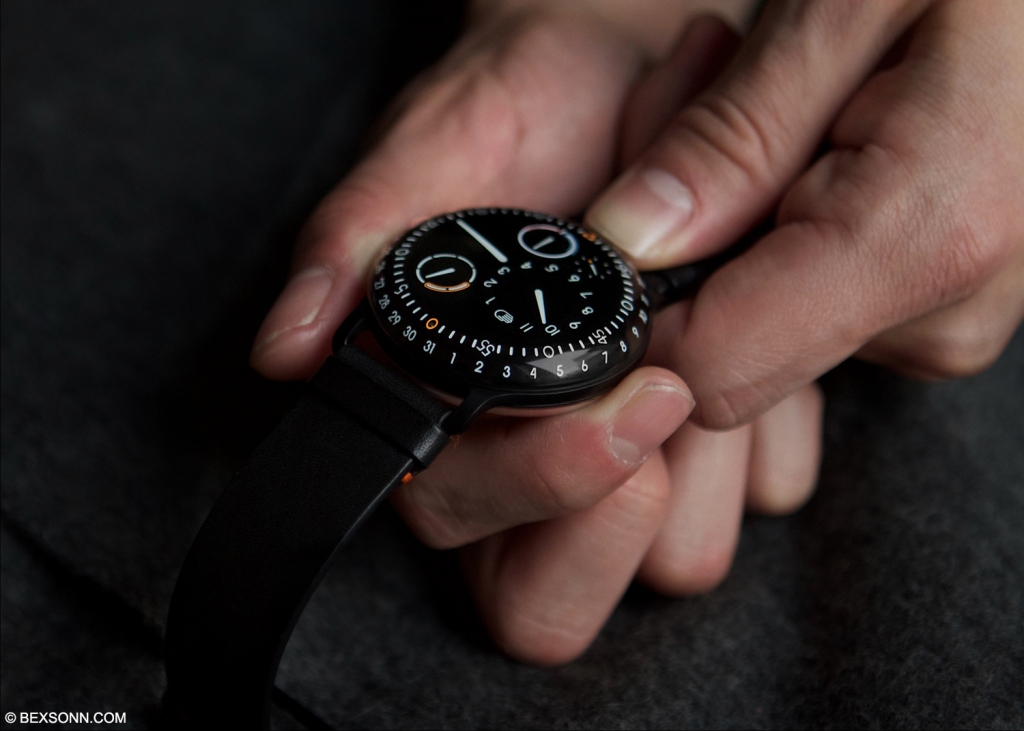 The Type 3 from the very start has enough going for it with its technological innovations to fill many articles of analysis and description, so you can imagine it was quite the challenge to distill it into a single one. Composed of two separate chambers, located in the front and the back, and held together by a titanium spine in the middle, this makes up the main components of the watch. The spine and lugs are grade 5 titanium, and this particular piece we had was the PVD coated version, adding to its stealthy look.
The Type 3 from the very start has enough going for it with its technological innovations to fill many articles of analysis and description, so you can imagine it was quite the challenge to distill it into a single one. Composed of two separate chambers, located in the front and the back, and held together by a titanium spine in the middle, this makes up the main components of the watch. The spine and lugs are grade 5 titanium, and this particular piece we had was the PVD coated version, adding to its stealthy look.
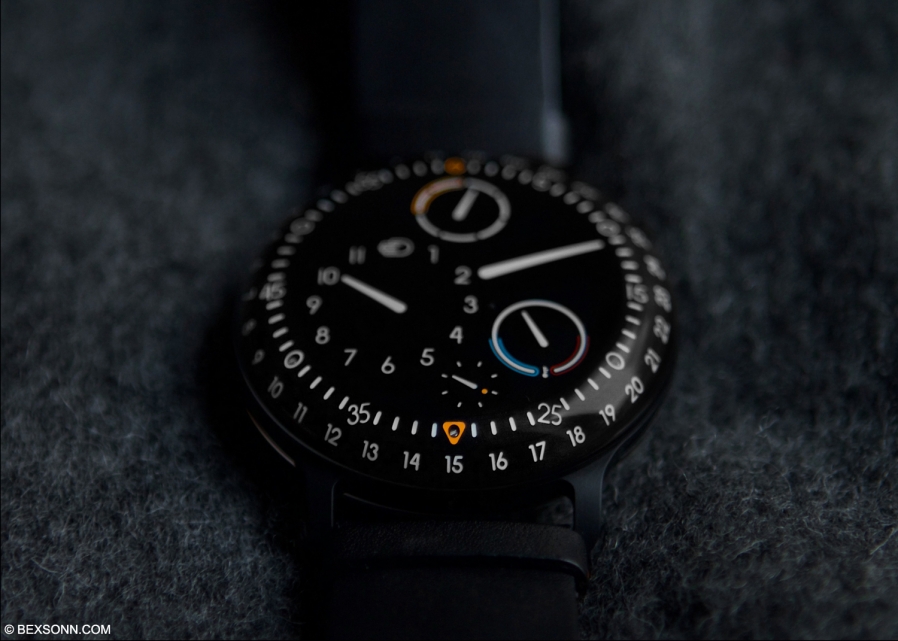 Starting at the chamber at the front, it houses Ressence’s signature dial with no hands, dubbed the Ressence Orbital Convex System, or in short ROCS. This was originally seen in the Type 1, where the dial had no hands and instead used independently rotating concentric discs to tell the time. The hands and numerals are painted in a fixed position but tells the time as each sub dial rotates at its own specific pace in unison. While this rotating system was already seen in the Type 1, I can certainly affirm that this is no novelty and it is nevertheless just as impressive to see in the flesh.
Starting at the chamber at the front, it houses Ressence’s signature dial with no hands, dubbed the Ressence Orbital Convex System, or in short ROCS. This was originally seen in the Type 1, where the dial had no hands and instead used independently rotating concentric discs to tell the time. The hands and numerals are painted in a fixed position but tells the time as each sub dial rotates at its own specific pace in unison. While this rotating system was already seen in the Type 1, I can certainly affirm that this is no novelty and it is nevertheless just as impressive to see in the flesh.
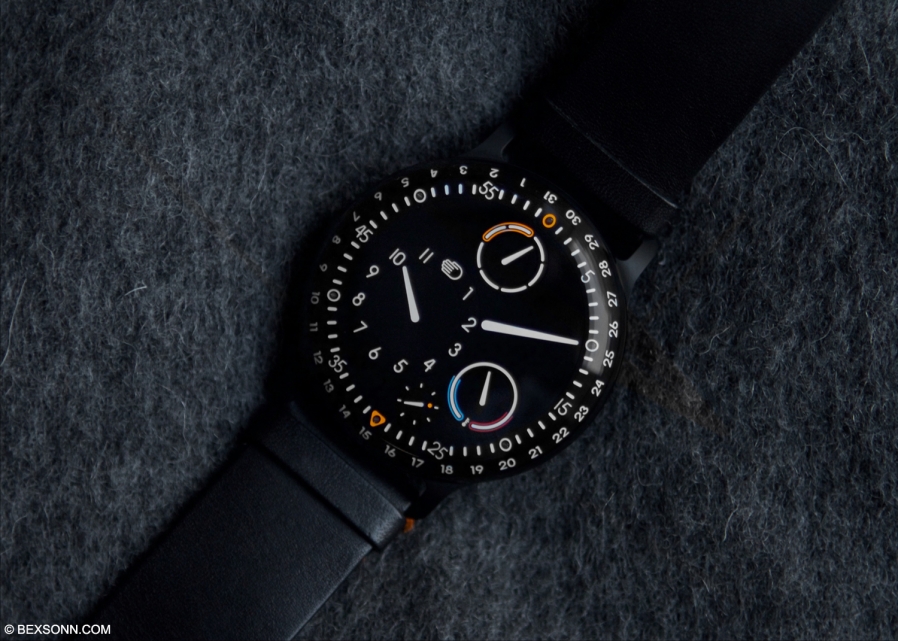 Where the Type 3 differs is that the dial chamber is oil filled, creating a surreal flat sheen to the Type 3’s face that looks more like an electronic screen than a face of a mechanical watch. The oil sits in between the dial and the domed sapphire but it creates an illusion through the way it refracts light, making the dial look like it is pressed right up against the sapphire and making the depth imperceptible. This is certainly no easy feat and what the folks at Ressence have managed to do is downright impressive. When working with materials such as oil, very careful consideration has to be taken as to what type of oil to use due to the volatile nature of the substance and its sensitivity to changing temperatures. Due to the mentioned sensitivity of the oil, the biggest update to the new Type 3 was the inclusion of a temperature gauge that tells the user whether the watch is too cold or too hot, easily communicated through the use of red and blue at the bottom of the sub dial. Using a bi-metal spiral located under the dial, it is able to react to the slightest of temperature changes and this is to ensure the optimum functionality of the watch and to protect it from extreme conditions.
Where the Type 3 differs is that the dial chamber is oil filled, creating a surreal flat sheen to the Type 3’s face that looks more like an electronic screen than a face of a mechanical watch. The oil sits in between the dial and the domed sapphire but it creates an illusion through the way it refracts light, making the dial look like it is pressed right up against the sapphire and making the depth imperceptible. This is certainly no easy feat and what the folks at Ressence have managed to do is downright impressive. When working with materials such as oil, very careful consideration has to be taken as to what type of oil to use due to the volatile nature of the substance and its sensitivity to changing temperatures. Due to the mentioned sensitivity of the oil, the biggest update to the new Type 3 was the inclusion of a temperature gauge that tells the user whether the watch is too cold or too hot, easily communicated through the use of red and blue at the bottom of the sub dial. Using a bi-metal spiral located under the dial, it is able to react to the slightest of temperature changes and this is to ensure the optimum functionality of the watch and to protect it from extreme conditions.
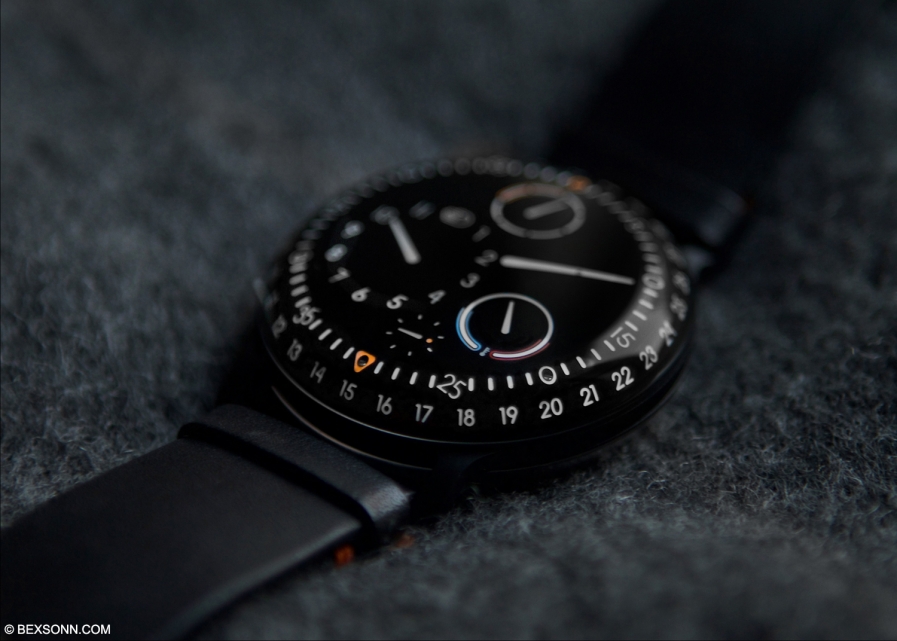 As expected, the chamber in the back holds the movement, which is a heavily modified ETA 2824-2 ébauche to be specific. I have always held a strong position about how the term in-house is loosely thrown around, which was once a thing of impressiveness but has now become somewhat overrated and misinterpreted due to over zealous marketing teams, and the Type 3 movement exemplifies this. The ETA 2824-2 in this Ressence is heavily modified, with 158 extra parts, making it close to unrecognisable. If you ask me, this non ‘in-house’ movement is far more impressive than most out there.
As expected, the chamber in the back holds the movement, which is a heavily modified ETA 2824-2 ébauche to be specific. I have always held a strong position about how the term in-house is loosely thrown around, which was once a thing of impressiveness but has now become somewhat overrated and misinterpreted due to over zealous marketing teams, and the Type 3 movement exemplifies this. The ETA 2824-2 in this Ressence is heavily modified, with 158 extra parts, making it close to unrecognisable. If you ask me, this non ‘in-house’ movement is far more impressive than most out there.
So, we’ve established that there are two chambers sitting in between a titanium spine, and you may be wondering how the movement powers the dial up front? Well, Ressence’s answer to that: micro-magnets. Inside the titanium spine are micro-magnets that connects the two and moves the dial. If Ressence’s courage to innovate is anything to go by, it is exemplified by the use of magnets, the bane and arch-enemy of mechanical watches. Of course, the movement in the Type 3 is still in fact a mechanical movement and susceptible to magnetism, but ingeniously it is held in a Faraday cage, a sort of shield that is immune to electromagnetic influences. All-in-all, the front, back and spine come together in harmony, where the movement communicates with the dial seamlessly to produce a watch that is both fluid in appearance and functionality.
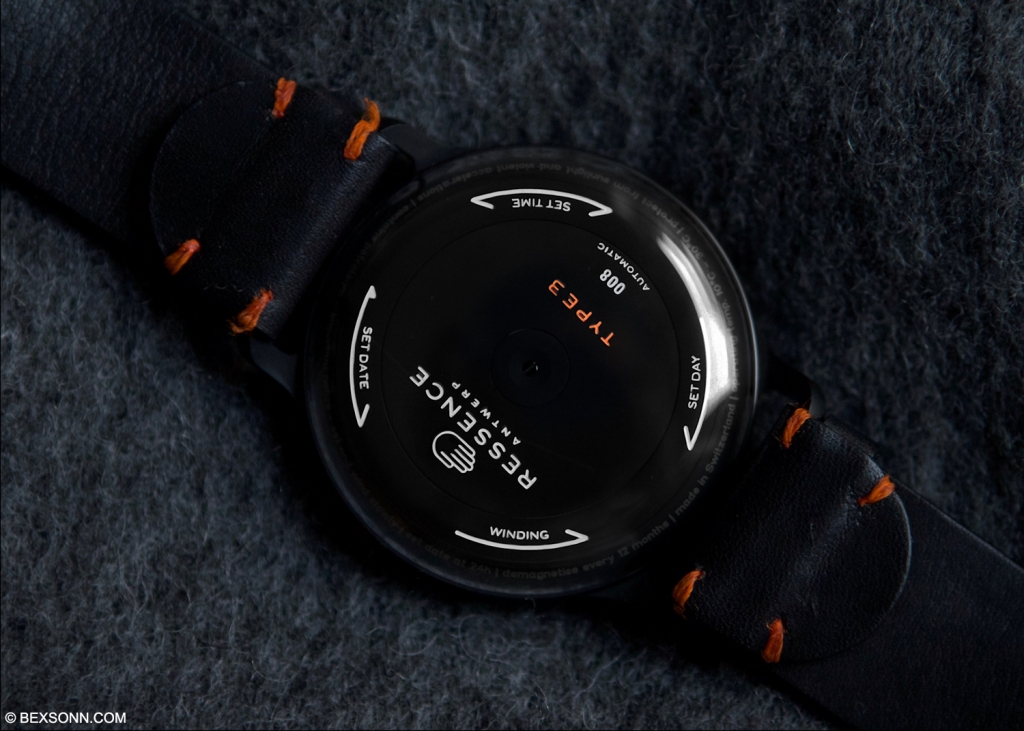 While one of the defining points of Ressence is encapsulated in their phrase ‘Beyond Hands’, referencing their ROCS method of telling time, another thing that is representative of their brand is the lack of a crown, instead using the case back as a method of setting the time and winding the watch. Utilising a gravitational gear system, the user rotates the caseback in order to set the watch. With the dial facing up, you can set the time by simply rotating the caseback. With the dial facing down and the ‘winding’ quadrant of the caseback lined up, you can manually wind the watch. However, it is a self-winding mechanism and this procedure won’t be required often.
While one of the defining points of Ressence is encapsulated in their phrase ‘Beyond Hands’, referencing their ROCS method of telling time, another thing that is representative of their brand is the lack of a crown, instead using the case back as a method of setting the time and winding the watch. Utilising a gravitational gear system, the user rotates the caseback in order to set the watch. With the dial facing up, you can set the time by simply rotating the caseback. With the dial facing down and the ‘winding’ quadrant of the caseback lined up, you can manually wind the watch. However, it is a self-winding mechanism and this procedure won’t be required often.
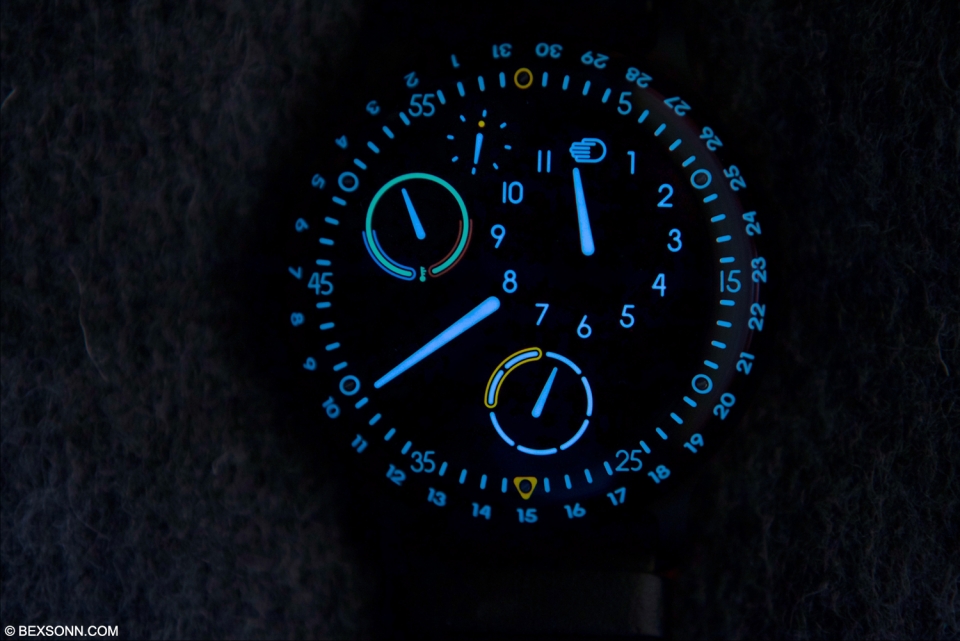 The dial layout was surprisingly intuitive and easy to read, first and foremost with the short hand and long hand denoting the hours and minutes of the day. Using a simple colour code enabled this intuitiveness as the subsidiary dial with the blue and red denotes the temperature gauge, and the other with two orange segments telling the day of the week. The orange represents the weekend and the white the weekdays. As for the smallest sub dial, this is a running seconds but interestingly it doesn’t run on the traditional 60 seconds but instead rotates once every 6 minutes, making movement on the dial barely perceptible. Finally, the perimeter of the dial, where the sapphire domes is the date indicator with the orange triangle at 6 o’clock denoting the current date. Overall the watch is very easy to read, with all numbers and hands filled with Superluminova to ensure maximum readability in the dark. In fact, the use of green, orange and blue lumes accordingly was particularly impressive in the dark.
The dial layout was surprisingly intuitive and easy to read, first and foremost with the short hand and long hand denoting the hours and minutes of the day. Using a simple colour code enabled this intuitiveness as the subsidiary dial with the blue and red denotes the temperature gauge, and the other with two orange segments telling the day of the week. The orange represents the weekend and the white the weekdays. As for the smallest sub dial, this is a running seconds but interestingly it doesn’t run on the traditional 60 seconds but instead rotates once every 6 minutes, making movement on the dial barely perceptible. Finally, the perimeter of the dial, where the sapphire domes is the date indicator with the orange triangle at 6 o’clock denoting the current date. Overall the watch is very easy to read, with all numbers and hands filled with Superluminova to ensure maximum readability in the dark. In fact, the use of green, orange and blue lumes accordingly was particularly impressive in the dark.
FINAL THOUGHTS
Wearing this Ressence Type 3 for a week was certainly a new experience to me, being used to more conservative pieces, but technical qualities aside I was pleasantly surprised. The watch, while sized at 44mm wears smaller due to its domed sapphire and sits nicely on the wrist. If I were to have one issue it would be the leather strap this amazing piece came on. The stitching and the quality of leather was perhaps questionable at times, seeming that even after a week of gentle wearing there was already noticeable wear. That being said, this is the most attention any watch has gotten on my wrist, both from friends and strangers with a mixture of confused stares to wide eyed marvel. For those who were intrigued I happily explained every detail I knew of how the watch worked, and for those who were confused as to whether it was an Apple-esque smartwatch watch, I didn’t mind as I sat back smugly, knowing just how incredibly complex the Type 3 was, beyond any smartwatch.
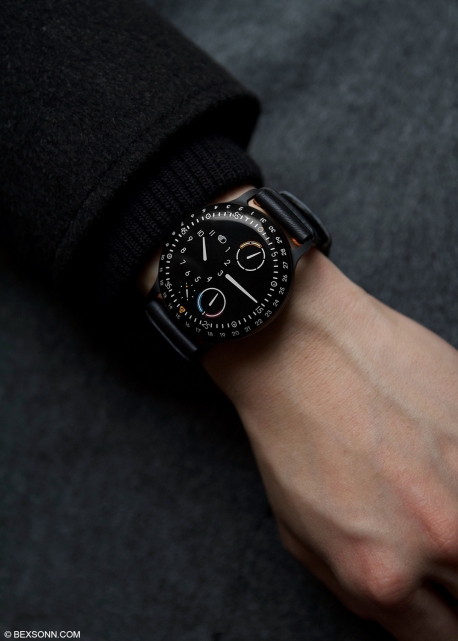 The pricing of this watch at £30,000 is certainly not cheap, but in a world where watch manufacturers are recycling and regurgitating old ideas, Ressence is taking a bold stand through its originality and innovation, representative of a new age in horology that most are too scared to take part in. For that, I can only commend and take my hat off.
The pricing of this watch at £30,000 is certainly not cheap, but in a world where watch manufacturers are recycling and regurgitating old ideas, Ressence is taking a bold stand through its originality and innovation, representative of a new age in horology that most are too scared to take part in. For that, I can only commend and take my hat off.
For more information on the Type 3BB and locations for points of sale, visit the official Ressence website.
